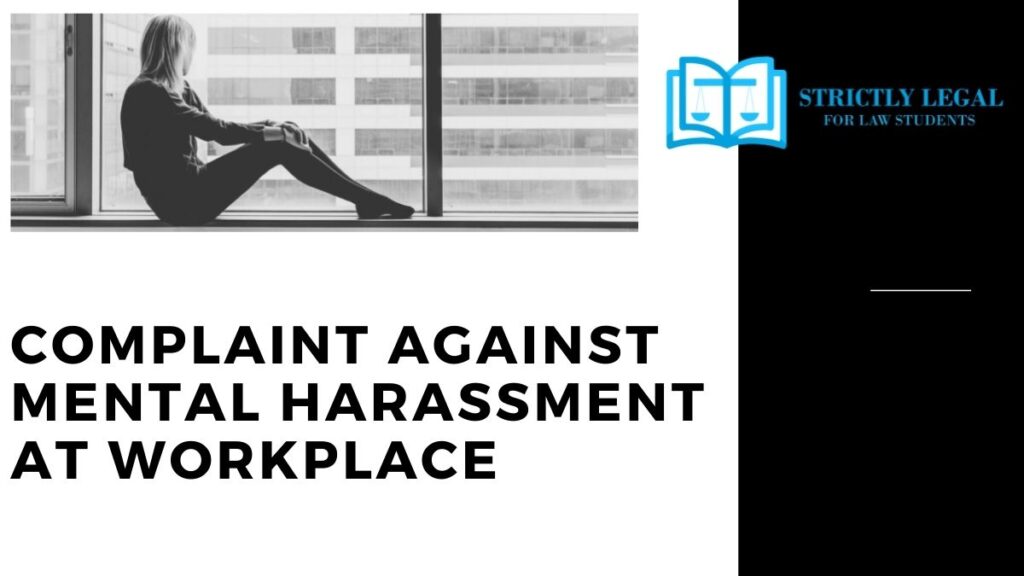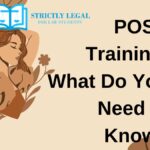Almost all of us are well aware of the term harassment. To put it in a layman’s terms harassment can be any unwanted and unwelcome physical or verbal behavior that can easily and quickly embarrass a person. These kinds of acts by someone are competent enough for disturbing both the mental and physical welfare of that person. Seeing this from a legal perspective, this kind of behavior can be upsetting, threatening or disturbing and is advanced from the prejudiced grounds. There can be various types of harassment- mental, physical, sexual, discriminatory, emotional, cyberbullying or online harassment and harassment based on caste, sex, religion and gender. However, in this blog, we have focused on mental harassment and how it takes place at the workplace in a day to day life.
Table of Contents
What exactly is mental harassment?
Unfortunate enough, the term Mental Harassment is nowhere mentioned under the Indian Statutes. Nonetheless, the Honorable Court of Andhra Pradesh in the case of L. Nagaraju v. Syndicate Bank and Ors., defined the term mental harassment as “Harassment is any improper and unwelcome conduct that might reasonably be expected or be perceived to cause offence or humiliation to another person. Harassment may take the form of words, gestures or actions which tend to annoy, alarm, abuse, demean, intimidate, belittle, humiliate or embarrass another or which create an intimidating, hostile or offensive work environment.” However, the Honorable Court further added that Workplace harassment is no different. It simply means when an employer show casts any unwelcome and unwanted behavior towards any employee or anyone else on his behalf that causes the employee to face any difficulty to perform the assigned task or makes them feel that they are in a hostile and claustrophobic situation. In order to prove a workplace harassment took place, the following concerns are needed to be present:
- Most importantly, the conduct towards the employee must be unwanted or unwelcome.
- The mentioned employee shall have to raise their voice as an objection to the unwanted behavior.
- The employee must have to allow the offending individual or individuals to amend their behavior at the workplace.
- The mentioned conduct or behavior must be of such a nature that it has an impact on the employee’s ability and mental state to complete the duties assigned to him/her in an efficient, efficacious and responsible manner.
Legal Analysis on Harassment at Workplace
A few rights are both inalienable and undeniable for human beings which are promised to them since birth. Such rights are called Human Rights, defined under the Human Rights Act, 1993 which refers to the rights related to life, liberty, equality, and dignity of an individual. In addition to that, the concept of Human Rights is not only accepted across the world but is also acknowledged by the Constitution of India which portrays that the Right to live and dignity is a human right and any sort of harassment will lead to cause its breach.
Statutes relating to Mental Harassment
As mentioned earlier, there is still no term called “mental harassment” mentioned in any of the Indian Statutes, however, there are quite a few statutes which mention certain safeguarding provisions in favour of women who are the most vulnerable victims of harassment at a workplace these days.
The Sexual Harassment at Workplace (Prevention, Prohibition and Redressal) Act, 2013
The aforementioned was the first ever legislation to be formed in order to safeguard women against sexual harassment in the workplace. The term “Sexual Harassment” has been defined under Section 2 of the Act. It further provides an in-depth meaning by mentioning that, to produce sexual harassment has taken place there must have happened either one or many essentials mentioned below. They are:
- Physical contact and advances
- A demand or a simple request for sexual favors
- Making sexual remarks
- Showing pornography
- Any other unwelcome and unwanted physical, verbal or non-verbal conduct which indicates to be of sexual nature.
Furthermore, the law also made it mandatory for the companies, etc or anything that is a workplace to follow protocols as to prevent from occurrence of sexual harassment.
Indian Penal Code, 1860
Although the term ‘Mental Harassment’ has not been bluntly expressed in the act, but the concept of Mental or Sexual Harassment, in a way, can be put under the provisions of Cruelty or torture. The Provisions are as follows:
- Assault or Criminal Force to a woman with an intention to outrage her modesty provided u/s 354
- Obscene Acts or songs provided u/s 294
- Sexual Harassment along with the punishment for the same provided u/s 354A
- Word, Gesture or Act with an intention to insult the modesty of a woman provided u/s 509
Information Technology Act, 2000
The Information Technology Act has a motive to provide recognition or acknowledgement legally to all sorts of online transactions and also to keep a track of various sorts of online acts and omissions. The Punishment for publishing or conveying any Obscene material via Electronic Form is mentioned under section 67 of the act; and the punishment for publishing or conveying of any material that has sexually explicit act etc. in an Electronic form, provided under section 67A.
Landmark Precedents for Sexual Harassment at Workplace
Every law student reading this article now must have come across the case of Vishaka and Ors. v. State of Rajasthan, where the Honorable Apex Court marked the case as a landmark judgement with regards to Sexual Harassment at Workplace. The term Sexual Harassment has however been discussed earlier in the article. The Honorable Apex Court further contended that getting rid of or freedom of sexual harassment at the workplace is a fundamental right of every employee guaranteed under the Constitution of India and also put forward certain guidelines for the employers to cohere to them for preventing the causes and occurrence of sexual harassment of women at the workplace.
Consequences of Mental Harassment on Employees
There can be consequences which may not be squeezed into mere words, but as per a layman’s understanding, they can be summarized in a minimal way. There can be more to it. One of the prime consequences is becoming lesser active and confident towards work and themselves. If confidence is lost, the spine is broken. Detaching oneself from the outer world comes next to the fear of being judged. Suffering from stress, restlessness, anxiety or sleeplessness does occur.
Conclusion
If we put this in simple words, it should be like every employer must keep a watch and must divert their focus towards bullying in the workplace and mental harassment of employees and accomplishment of stern rules to prevent the same. There should be a corporate-friendly environment so that the employee can work without feeling vulnerable or unsafe.

Law student.
Turning legal insights into engaging narratives.





